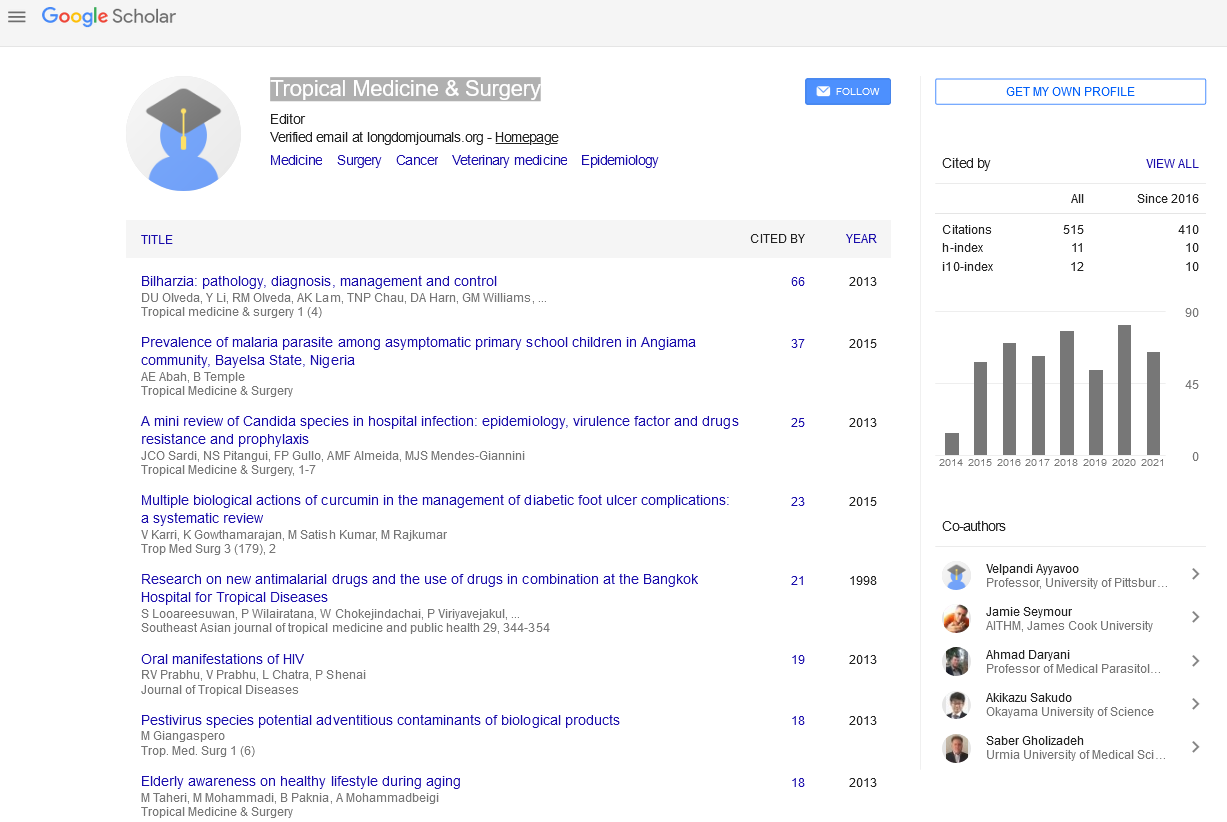PMC/PubMed Indexed Articles
Indexed In
- Open J Gate
- Academic Keys
- RefSeek
- Hamdard University
- EBSCO A-Z
- OCLC- WorldCat
- Publons
- Euro Pub
- Google Scholar
Useful Links
Share This Page
Journal Flyer

Open Access Journals
- Agri and Aquaculture
- Biochemistry
- Bioinformatics & Systems Biology
- Business & Management
- Chemistry
- Clinical Sciences
- Engineering
- Food & Nutrition
- General Science
- Genetics & Molecular Biology
- Immunology & Microbiology
- Medical Sciences
- Neuroscience & Psychology
- Nursing & Health Care
- Pharmaceutical Sciences
Abstract
Bilharzia: Pathology, Diagnosis, Management and Control
David U Olveda, Yuesheng Li, Remigio M Olveda, Alfred K Lam, Thao N P Chau, Donald A Harn, Gail M Williams, Darren J Gray and Allen G P Ross
More than one billion people travel internationally each year and approximately 100 million to the tropics. Schistosomiasis is a neglected tropical disease caused by trematode blood flukes of the genus Schistosoma. It currently infects over 250 million people worldwide and results in approximately 25 million disability adjusted life years lost. Clinical manifestations depend on the affected organ. Subtle morbidities have also been documented including: growth retardation, anaemia and poor cognitive function in children. While schistosomiasis has been eradicated from Japan and significantly reduced in parts of China and Egypt, transmission in many other regions remains ongoing due to the wide-spread distribution of the intermediate snail host, poor sanitation, lack of health education and decreasing compliance to mass drug administration. Integrated control has significantly reduced the burden of disease in China but considerable financial capital is needed if similar results are to be duplicated elsewhere. Human vaccination is in various stages of development, and once found, will become an integral part of future control. This comprehensive review examines the epidemiology, pathology, diagnosis, clinical management, prevention and control of the disease.

